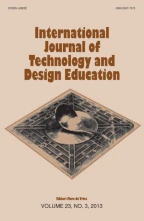Abstract
In recent years, bio-inspired approach to design has gained considerable interest between designers, engineers and end-users. However, there are difficulties in introducing bio-inspiration concepts in the university curriculum in that they involve multi-disciplinary work, which can only possibly be successfully delivered by a team with integrated competencies. The aim of this work is summarising the results of the first workshop on bio-inspired design carried out at the Hybrid Design Lab of Seconda Università di Napoli, involving Year 2 students of the BSc in Industrial Design. The common theme proposed for their projects was “Bio-inspired design of sport”. Ideally, a sport item would need to respond to a number of exigencies, including safety, comfort, zero-energy balance and/or use of renewable energy sources, multi-functionality. The common aim of the projects was investigating in which cases bio-inspiration can assist in the fulfilment of the above exigencies. The students were asked to present examples from nature and, via an abstraction process, to apply them to the design of sport items. Finally, they were required to clarify the nature and the extent of bio-inspiration in their projects. Some of the projects, which were considered more interesting and realisable, are reported and briefly commented, especially on the nature, extent and appropriateness of their bio-inspiration. A test for feedback has been given to the students, whose scope, structure and general outcome is also discussed.
Similar content being viewed by others
Explore related subjects
Discover the latest articles, news and stories from top researchers in related subjects.References
Ashby, M. F. (2005). Materials selection in mechanical design (3rd ed., p. 603). Oxford: Butterworth & Heinemann. (9780750661683).
Ball, P. (2001). Life’s lessons in design. Nature, 409(6818), 413–416.
Barthelat, F. (2007). Biomimetics for next generation materials. Philosophical Transactions of the Royal Society A Mathematical, Physical and Engineering Sciences, 365(1861), 2907–2919.
Bonser, R. H. C., & Vincent, J. F. V. (2007). Technology trajectories, innovation, and the growth of biomimetics. Proceedings of the Institution of Mechanical Engineers Part C-Journal of Mechanical Engineering Science, 221(10), 1177–1180.
Bruck, H. A., Gershon, A. L., Golden, I., Gupta, S. K., Gyger, L. S., & Magrab, E. B. (2007). Training mechanical engineering students to utilize biological inspiration during product development. Bioinspiration and Biomimetics, 2(4), S198–S209.
Fratzl, P., & Weinkamer, R. (2007). Nature’s hierarchical materials. Progress in Materials Science, 52(8), 1263–1334.
Holm, I. (2006). Ideas and beliefs in architecture and industrial design: How attitudes, orientations, and underlying assumptions shape the built environment. Oslo School of Architecture and Design, PhD thesis, p. 239.
Jeronimidis, G. (2004). Biodynamics (Natural dynamic systems, material behaviour and adaptation in architecture and engineering). Architectural Design, 169, 90–95.
Karana, E., Hekkert, P., & Kandachar, P. (2004). Material considerations in product design: A survey on crucial material aspects used by product designers. Materials and Design, 29(6), 1081–1089.
Kuhn, T. (1996). The Structure of Scientific Revolutions (3rd ed.). United States: University Of Chicago Press. (978-0226458083).
Langella, C. (2003). Nuovi paesaggi materici, Design e tecnologia dei materiali. Firenze: Alinea. (88-8125-713-0).
Langella, C. (2007). Hybrid design. Progettare tra tecnologia e natura. Milano: Franco Angeli. (13-9788-846483461).
Low, M. K., Lamvik, T., Walsh, K., & Myklebust, O. (2001). Manufacturing a green service: Engaging the TRIZ model of innovation. IEEE Transactions on Electronics Packaging Manufacturing, 24(1), 10–17.
Mann, P. (1990). Symmetry, chance, biomorphism, a comparison of the visual art and poetry of Arp. Hans Dada period (1916–1924), 6(1), 82–99.
Nakrani, S., & Tovey, C. (2007). From honeybees to internet servers: Biomimicry for distributed management of Internet hosting centers. Bionspiration & Biomimetics, 2(4), S182–S197.
Norman, M. D., Finn, J., & Tregenza, T. (2001). Dynamic mimicry in an Indo-Malayan octopus. Proceedings of the Royal Society London B, 268(1478), 1755–1758.
Nosonovsky, M., & Bhushan, B. (2009). Superhydrophobic surfaces and emerging applications: Non-adhesion, energy, green engineering. Current Opinion in Colloid & Interface Science, 14(4), 270–280.
Patil, H. S., & Vaijapurkar, S. (2007). Study of the geometry and folding pattern of leaves of Mimosa pudica. Journal of Bionic Engineering, 4(1), 19–23.
Rizzo, N. W. (2006). Characterization of the structure and composition of gecko adhesive setae. Journal of the Royal Society Interface, 3(8), 441–451.
Roder, H., Maki, K., & Cheng, H. (2006). Early events in protein folding explored by rapid mixing methods. Chemical Review, 106(5), 1836–1861.
Rognoli, V., & Levi, M. (2004). Materiali per il design: Espressività e sensorialità. Milano: Polipress. (88-7398-012-0).
Vincent, J. F. V. (2009). Biomimetics – a review. Proceedings of the Institution of Mechanical Engineers Part H Journal of Engineering in Medicine, 223(H8), 919–939.
Vincent, J. F. V., Bogatyreva, O. A., Bogatyrev, N. R., Bowyer, A., & Pahl, A. K. (2006). Biomimetics: Its practice and theory. Journal of the Royal Society Interface, 3(9), 471–482.
Vincent, J. F. V., & Mann, D. L. (2002). Systematic technology transfer from biology to engineering. Philosophical Transactions of the Royal Society: Physical Sciences, 360(1791), 159–173.
Wen, H. I., Zhang, S. J., Hapeshi, K., & Wang, X. (2008). An innovative methodology of product design from nature. Journal of Bionic Engineering, 5(1), 75–84.
Acknowledgments
The essential contribution of all the students of year 2 of the BSc in Industrial Design at SUN (Seconda Università di Napoli) is gratefully acknowledged, in particular S. Fedele and E. Franchini (ski boots), V. A. Viggiano, G. Signore, C. Letizia, and D. C. Fresegna (handball shoe), S. Castaniere, A. Giarletta, and F. Tarantino, V. Varriale (firefly), A. Russo, and D. Penna (general sport protection), C. Brunetti (rucksack + tent), S. Bellini (swimming sock), D. Dalia (surf shoe), F. Giaccio, L. Menditto, and A. Mozzillo (anti- perspirant). Some ideas for this work have also been inspired from the dissertation work of G. Crisci: her apport is here acknowledged as well.
Author information
Authors and Affiliations
Corresponding author
Rights and permissions
About this article
Cite this article
Santulli, C., Langella, C. Introducing students to bio-inspiration and biomimetic design: a workshop experience. Int J Technol Des Educ 21, 471–485 (2011). https://doi.org/10.1007/s10798-010-9132-6
Published:
Issue Date:
DOI: https://doi.org/10.1007/s10798-010-9132-6
